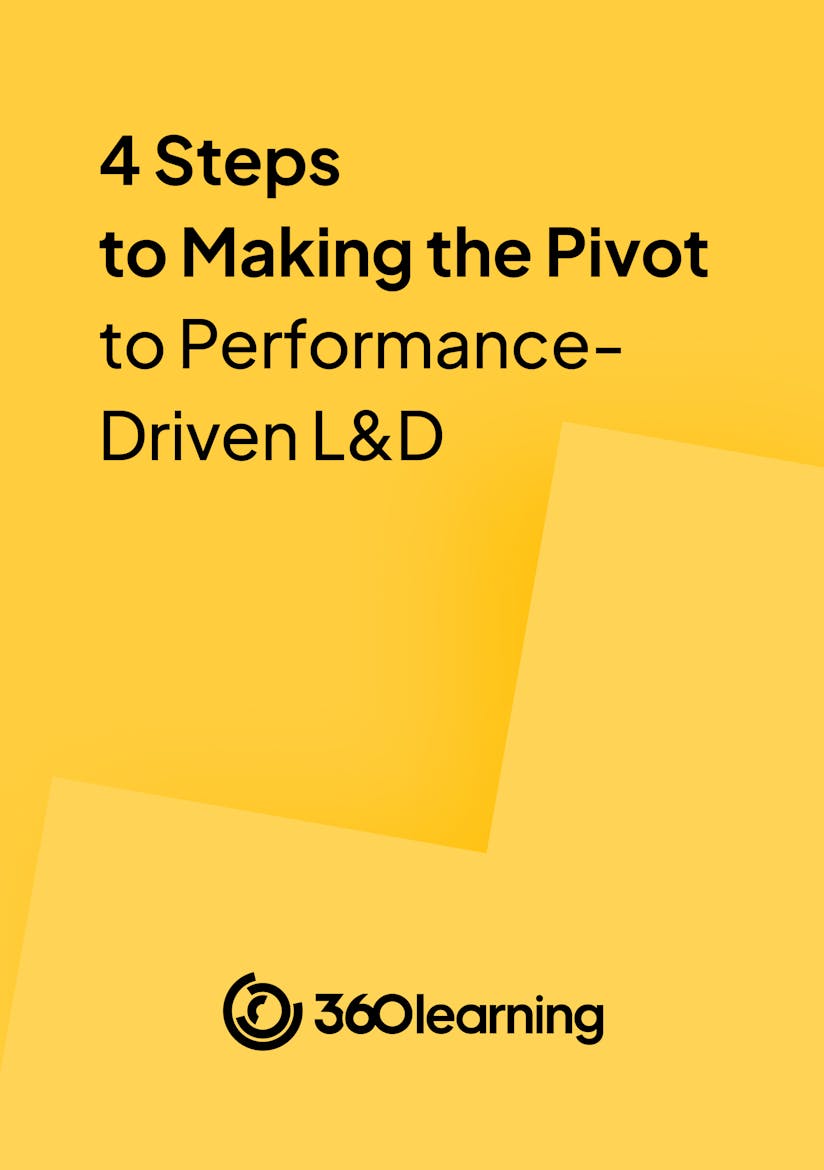

Training & Learning
Just Started as Head of L&D? Here's How to Build a High-Impact Function from Day One
Establishing yourself in a new L&D leadership role—or repositioning your team—can feel challenging, even overwhelming.
The silver lining? It’s also a prime opportunity to lay a solid foundation, showcase your value early on, and build an impactful, results-driven L&D function.
In this article, with insights from Sam Allen, Global Head of Learning and Development at Ideagen, we’ll explore how to establish a data-driven, stakeholder-aligned L&D strategy and uncover four key pillars to help you prioritize your efforts effectively.

Impactful, demonstrable L&D in 4 simple steps
By providing your contact info, you agree to receive communications from 360Learning. You can opt-out at any time. For details, refer to our Privacy Policy.
Strategic L&D: A playbook for high-impact success
Starting strong as a new leader in Learning and Development (L&D means creating a function that delivers measurable impact, aligns with organizational goals, and earns stakeholder buy-in.
Here are three essential steps to help you build a data-driven, stakeholder-aligned L&D function that drives real results.
1. Align L&D with organizational strategy
Strategic alignment means understanding your organization’s goals and aligning L&D initiatives to support them by engaging with stakeholders throughout the organization.
To get engagement flowing, ask your stakeholders to outline their objectives and key results (OKRs), short- and long-term priorities, programs of activity, and strategies. Then, ask them about their confidence in achieving these goals.
“How comfortable are you with meeting these objectives? ls a great question to open dialogue. If stakeholders express any uncertainty, follow up by asking why,” says Sam Allen, Global Head of Learning and Development at Ideagen.
“How comfortable are you with meeting these objectives? ls a great question to open dialogue. If stakeholders express any uncertainty, follow up by asking why,” - Sam Allen, Global Head of Learning and Development at Ideagen.
The goal isn’t to focus solely on their views about learning solutions but to develop a holistic picture of the present landscape and how you can help them achieve their priorities.
2. Assess your existing infrastructure
Begin by fully understanding the operational landscape of your organization.
The first step in building an impactful L&D function is familiarizing yourself with the current processes for handling training requests or addressing learning needs, and the infrastructure, including the learning management system.
Next, review existing systems for collecting critical data and ensure the data quality meets your standards. Additionally, assess the budgeting process and determine how L&D expenditures are tracked and managed.
This foundational insight will provide a clear picture of the current state and help you identify areas for improvement.
3. Develop your roadmap
Building a credible relationship with your stakeholders makes it easier to deliver on your L&D roadmap.
“The roadmap is how we tackle the biggest things that come out from the business perspective,” says Sam.
“The roadmap is how we tackle the biggest things that come out from the business perspective,” - Sam.
For example, at Ideagen, Sam and his team identified onboarding as the most commonly cited pain point. They then built a workstream into their roadmap that empowered them to design and deploy an automated and scalable onboarding pathway for new employees.
Sam’s four pillars for strategic, high-impact L&D
A strategic L&D function focuses on high-impact activities by being accessible to the broader organization, analyzing business needs, and directing resources effectively.
To help you prioritize which pain points you and your team should target, ensure that your activity falls into one of the following four pillars:
1. Supporting the organization’s growth and transformation: Addressing rapid shifts in required skills and building teams to support organizational growth and adaptability.
2. Fostering talent and career growth: While not always directly tied to measurable business metrics, this area emphasizes helping individuals grow, upskill, and feel confident and valued in their careers, fostering long-term engagement and development.
“We’re comfortable that the output of fostering talent isn't measurable as long as it's going to make people feel they can grow,” - Sam.
3. Driving today's performance: The priority here is to deliver learning initiatives that directly improve business performance in the short term by closing skills gaps that impact immediate outcomes.
4. Optimizing your team's effectiveness: Streamlining your team's processes and systems ensures they are optimized to support organizational growth, performance improvement, and talent development.
Three tips: Pace, change, and velocity
If you’re looking to establish yourself as a new head of L&D, Sam has some extra advice to help you hit the ground running.
They are:
- Prioritize big-picture goals while staying flexible for operational demands.
- Take detailed notes and reflect often—find a mentor or coach to help you strategize.
- Focus on closing the most critical gaps between business needs and team capabilities.
Embarking on your new L&D leadership role with Sam’s playbook, prioritization pillars, and tips will make it much easier for you to distinguish between your effort, expenditure, and impact as you establish yourself.
Explore further insights on aligning our L&D vision and strategy with business needs on the latest episode on The L&D Podcast: How to Establish Yourself and Your Team as a New Head of L&D With Sam Allen
Want more peer insights on transforming workplace learning? Sign up to become a member of the L&D Collective. Or you can subscribe below to our weekly newsletter to receive our latest posts directly in your inbox.



